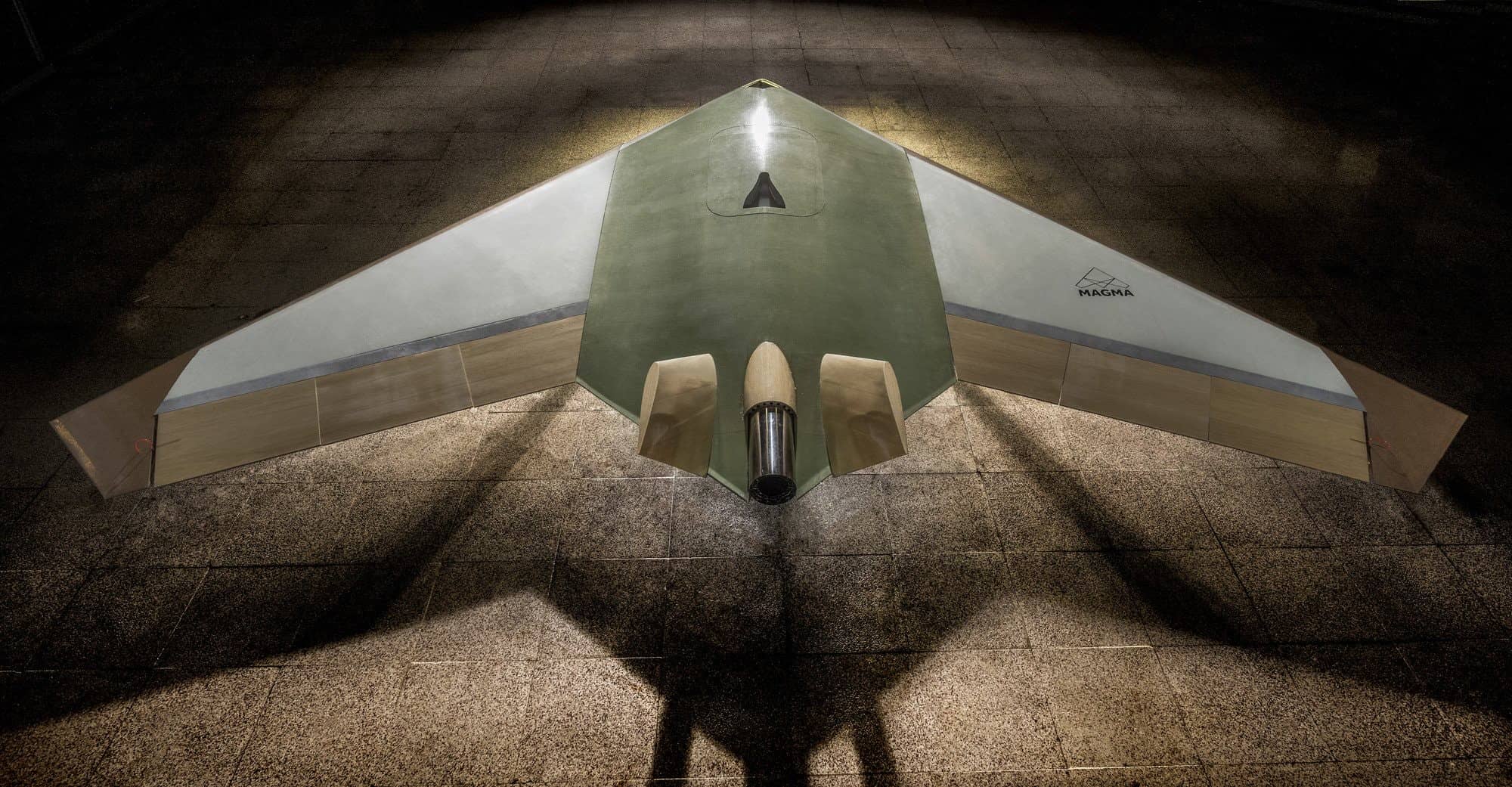BAE Systems has achieved a milestone in aviation history by successfully maneuvered the first aircraft in flight by making use of air that was supersonically blown rather than ailerons or control surfaces. This feat took place in the skies over the Llanbedr Airfield located in Gwynedd, northwest Wales. The test subject of the flight was wing-shaped Magma UAV.

BAE Systems’ Magma UAV utilizes two new ‘flap-free’ technologies that according to BAE Systems will help revolutionize the aircraft design. Right now, the traditional aircraft make use of rudders, elevators, ailerons, flaps, and other control surfaces for flying in any way other than a straight line. We have over ten decades of development in aircraft design, and yet we are stuck with a. system that is best defined as crude, complex, heavy, and inefficient.

Magma UAV has been created by BAE Systems in partnership with the British government and the University of Manchester. It utilizes a direct and simple ‘blown air’ technology that can generate supersonic puffs of air from the inside as opposed to control surfaces for governing the flow of air. Currently, Magma is undergoing testing for two iterations of ‘flap-free’ technology.

The first is known as Wing Circulation Control and the second is known as Fluidic Thrust Vectoring. For the Wing Circulation Control, the air from the aircraft engine is bled off and then supersonically blown via the narrow slots that have been made around the specially shaped wing trailing edge to carry out the exact job of an aileron. The Fluidic Thrust Vectoring deflects the engine’s jet exhaust by blowing air inside the nozzle for changing the pitch of the aircraft.
As per BAE Systems, the Magma technology holds the potential of not only enhancing the control and performance of aircraft but will also render the aircraft to be lighter, cheaper, and more reliable. Furthermore, by taking the gaps and edges that are present in conventional control surfaces out of the equation, the aircraft also become stealthier and less radar reflective.

Bill Crowther, senior academic and leader of the Magma project at The University of Manchester, said, ‘We are excited to have been part of a long-standing effort to change the way in which aircraft can be controlled, going all the way back to the invention of wing warping by the Wright brothers. It’s been a great project for students to be part of, highlighting that real innovation in engineering is more about finding practical solutions to many hundreds of small technical challenges than having single moments of inspiration. The partnership with BAE Systems has allowed us the freedom as a university to focus on research adventure, with BAE Systems providing the pathway to industrial application. We made our first fluidic thrust vectoring nozzle from glued together bits of plastic and tested it on a hair drier fan nearly 20 years ago. Today BAE Systems is 3D printing our components out of titanium, and we are flight testing them on the back of a jet engine in an aircraft designed and built by the project team. It doesn’t get much better than that.’


